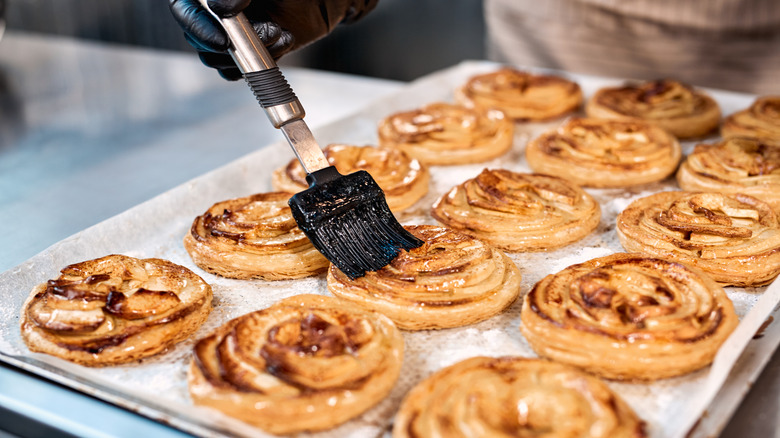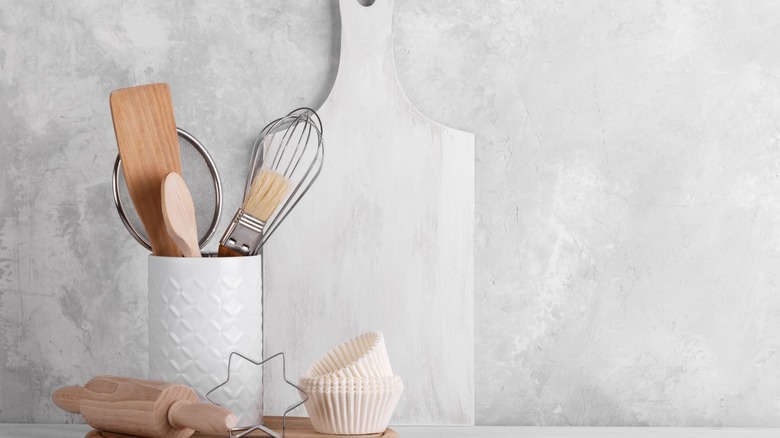The Palm Of Your Hand Is The Best Tool For Cleaning Greasy Pastry Brushes
Baking and pastry making can be fun and glamorous, but the cleanup afterward, not so much. Take pastry brushes; these valuable kitchen tools, used for glazing and applying egg washes, are challenging to clean, especially when coated with sticky, greasy substances. However, the solution to this problem is not found in any special cleaning product or tool, but rather something much more accessible: your own palm.
The process is straightforward. Begin by running the pastry brush under warm water to remove any large particles of food or grease. Next, pour a small amount of your regular dish soap into the palm of your hand. With the brush in your other hand, gently press its bristles into the soap-laden palm. Start to work the brush in a circular motion against your hand. This action helps the soap to penetrate deep into the bristles, cutting through the grease and breaking it down. The texture of your palm acts as a gentle scrubber, cleaning between the bristles without damaging them, which is especially important for brushes with natural fibers.
You can clean the handle with a soft soapy sponge. Once done, rinse the brush under warm running water while continuing the circular scrubbing motion against your hand. This helps to ensure that all the soap and grease are completely washed away. Repeat the process if necessary, until the water runs clear and the brush is free of any greasy residue.
After the washing, comes the drying
After cleaning your pastry brushes, it's equally important to dry them properly. Improper drying can lead to issues like mold growth, unpleasant odors, or bristle damage, all of which will affect the brush's performance and shorten its lifespan. To avoid these problems, there are two effective methods to ensure your brushes are thoroughly dried.
The first method involves using salt to absorb any residual moisture. After rinsing your brush, gently shake off any excess water and then bury the bristles in a container filled with salt. The salt acts as a desiccant, drawing out moisture from the bristles. Leave the brush in the salt overnight. The next day, remove your brush and gently shake off any remaining salt.
Alternatively, you can use a blow dryer for a quicker drying method, just be sure to use it on the lowest heat setting. Hold the dryer a reasonable distance from the brush to avoid heat damage. Move the dryer back and forth over the bristles so that the warm air reaches all parts of the brush. This method is efficient and quick, making it ideal when you need to use the brush again shortly after washing. Whichever method you choose, ensure that your pastry brush is completely dry before storing it. This not only prolongs the life of your gadget but also ensures that it is ready for use, in perfect condition, for your next baking adventure.

